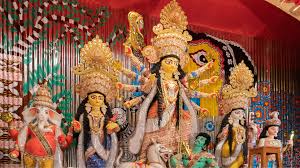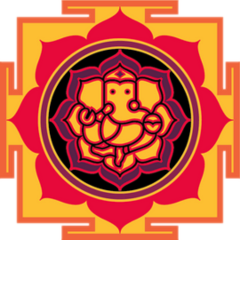
Overture
Durga Puja or Durgotsav is a 9-day long celebration to reveres Goddess Durga. It is the most popular festival in numerous Indian states like West Bengal and Uttar Pradesh. The festival is famous for the name Durgotsav and Sharad Navratri. It is an annual Hindu festival on which thousands of devotees reveres Goddess Durga.
People also recognize this festival with names likeSharadiya Pujo, Maha Pujo, and Ajakbondhan. It falls in Ashvin month in accordance with the Hindu calendar.
The festival typically falls in the month of September or October every year. This holy celebration is the commemoration of the epic battle between Goddess Durga and Mahishasura. The day is celebrated for the embodiment of conquest of good over the devil.
The date of this festival decides the date of Dussehra which is also called Vijayadashmi.
Meaning of Durga
Goddess Durga is commonly worshiped as the deity of Shakti. The meaning of Durga is the one who is intricate to approach. Nevertheless, she is the mother of the universe and a brave warrior. She is the one who is engrossed with fondness, beauty, power, wealth, and intrinsic worth.
Significance of Durga Puja
The festival of Durga Puja is to devote Goddess Durga prior to embarking on a fearful battle with the king of Lanka, Ravana.
Hindu mythology mention, Lord Ram worships Mahishasuramardini and offers her 108 blue lotuses with 108 lighting lamps for her blessings. Later, he triumphs over the demons and establishes Dharma.
The day of Vijayadashmi is the symbol of victory of goodness over demons. It is the day to rejoice Lord Ram’s victory. On this day devotees often observe fast to seek the blessing of Lord Ram and Goddess Durga to triumph over obstacles in life.
Fasting and devoting Goddess Durga in the period of Shardiya Navratri helps devotees to win over negativity and demons. It makes devotees gain knowledge and wealth.
History behind the Celebration
The legends mention, according to the Hindu Mythology the celebration of Navratri takes place to commemorate the battle of Goddess Durga and Mahishasur.
Back in that time, the demons set to war against Gods and Goddess Durga has to be the one to slay the demons and protect the earth. The Goddess begins the battles against the demons on Magha Saptami, the seventh day and slays Mahishasura on Vijayadashami, the final day.
In Hindu customs and religion Goddess Durga is called the “Destroyer of Evil”. In the tales, she has ten arms with each carrying a lethal weapon to slay and a Lion as her vehicle. On the day of Vijayadashmi, devotees worship this form of Maa Durga.
Goddess Durga is known as the mother of the world and she is known with names like Amba, Bhavani, Chandika, Parvati, Gauri, and Mahishasuramardini. People believe her to be the protector of the righteous.
Celebration and Rituals
The celebration mainly occurs in 9 days. People across the world worship Goddess Durga and her 9 Avatars each day. On the first day, people worship Goddess Durga and chant Mantas. On this day people also install a Kalash (urn) in the temple in front of the worship idol of Maa Durga.
However, the concluding 5 days have a major impact on the celebration.
On this day, Goddess Durga comes down to the earth with her children Lakshmi, Saraswati, Kartikeya, and Ganesha. People install colorful worship idols of the Goddess in their house on this day.
Day of Saptami-
On the day of Saptami, people worship nine different kinds of trees which hold the belief of nine different forms of Goddess Durga. It is the day when the holy presence of Maa Durga invokes the worship idols. Devotees commence this day by bathing a banana tree early in the morning.
Day of Ashtami-
The day of Ashtami holds a significant value. On this day, people worship Maa Durga in the form of a young unmarried girl. This ritual is called Kumari Puja.
Later in the evening of the same day, Sandhi Puja takes place where people worship Goddess Durga in her Chamunda form. She is the form of Goddess who slaughters Mahishasura, Chanda and Munda. People perform Dhunuchifolk dance to please the Goddess after the slaying.
Day of Navami-
Navami is the last day of nine days long festival. This day concludes with the chanting of holy Mantra & prayers, performing tradition rituals and Hawan. This is the day when Goddess Durga kills Mahishasura in her Mahishasuramardini form.
On this day, devotees clean up in the dawn and wear neat clothes to offer prayers to the Mother of Universe and present her with the Bhog (offerings). After the 9-day long celebration, on the day of “Navmi”, the worship of the idols of Goddess Durga takes place in every region.
Women and men across the country observe fast for 9 days. They eat fruits and foodstuff that doesn’t contain grain and corn. Some people fast on the first and the last (eighth) day of the festival.
On a ninth day, a grand puja is held. Devotees, especially women call nine young girls and one young boy for offerings. The nine girls and one boy sit in a row and eat special offerings which has RawaHalwa and Chana with Puri. This is a significant fact about Navratri.
Day of Dashmi-
Dashmi is the auspicious day when Goddess Durga returns to her husband’s dwelling and devotees take the worship idols for immersion. On this day, married women offer Sindur (red powder) to the Goddess. After the immersion of worship idols, sweets and offering are distributed in the form of blessings.
Delectable Offerings and Dishes
Dishes to try on the fasting days-
Sweets- Aloo Halwa, Kaju Katli and Peda.
Drinks- Lassi, Meethi Dahi, and Chaach.
Snacks- Aloo-Paneer Kofta and Kuttu Pakodi.
Meals- Sabudana Khichdi, Samvat Rice Khichdi, Kuttu Kachauri, Kuttu Khichdi, and Vrat Aloo.
Dishes for Navami Celebration-
Sweets- Sooji Halwa and Sabudana Kheer.
Drinks- Lassi, Meethi Dahi, and Chaach.
Snacks- Chana Masala, Uttapam, and Rajgira Paratha.
Meals- Chana Masala, Jeera Aloo, and Samvat Rice Pulao.
Durga Puja across the Country-
Durga Puja concurs with another grandeur festival i.e. Dussehra. The festival of Dussehra is also popular as Vijayadashami. Hindu mythologies, it is the day when Lord Ram wins the battle over king Ravana. In accordance with the traditions, the act of Ram Lila takes place and a majestic statue of Ravana is burned.
The celebration of Durga Puja takes place on a significant level in Bengal, Orissa, Uttar Pradesh, Madhya Pradesh, and the seven sisters. People from Assamese, Maithili, Odiya and Bihari region have a significant value for Durga Puja. It is a Socio-cultural festival that brings people together for grand festivity.
People from Nepal also celebrate the festival of Durga Puja as Dashain. Along with this, the modern nation of Bangladesh also celebrates the festival with great zeal.



